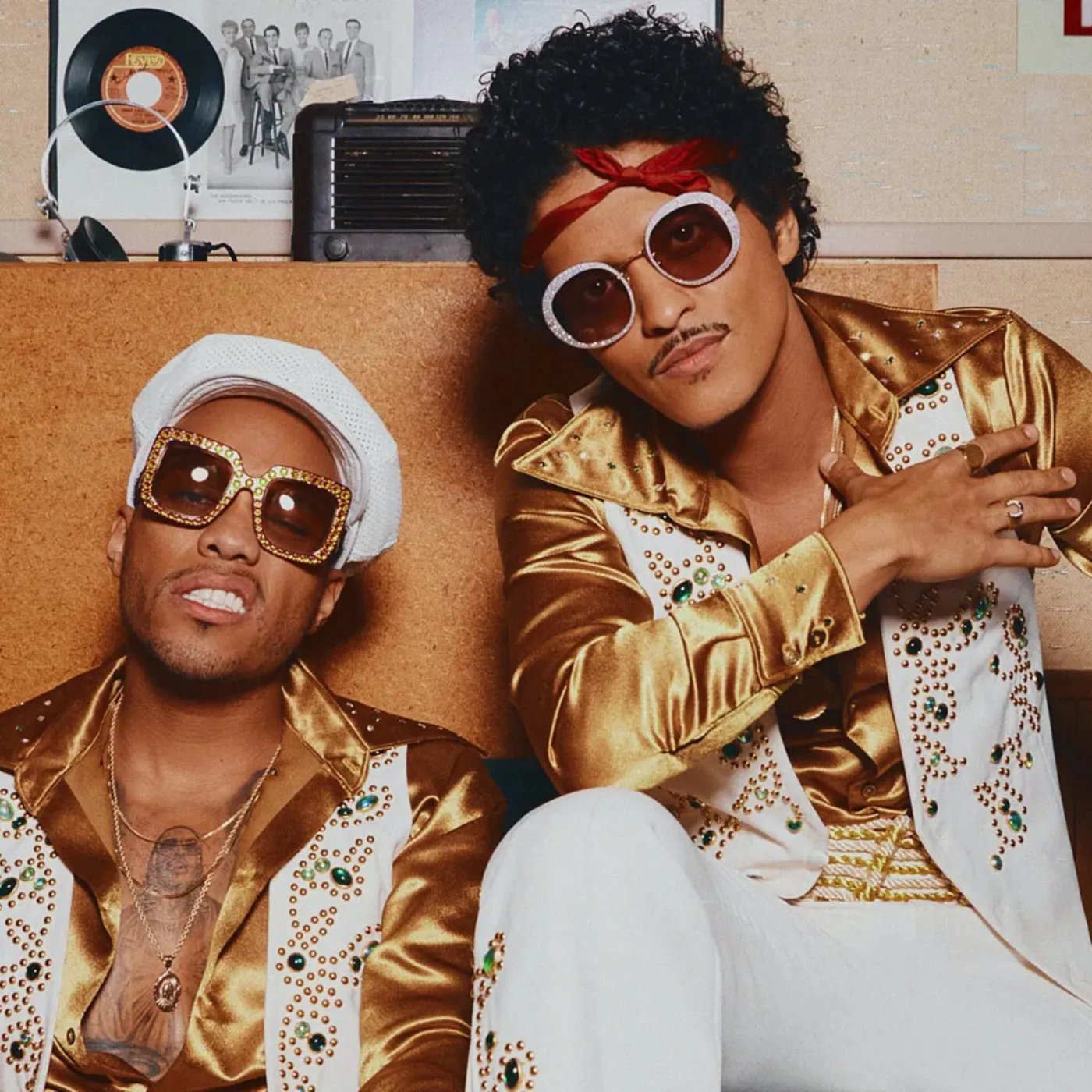

Bruno Mars Breaks the GRAMMY Game: Inside Silk Sonic’s Ruthless Takeover
When Bruno Mars and Anderson .Paak joined forces to create Silk Sonic, it felt like lightning in a bottle. In an era where collaborations are often fleeting and manufactured, Silk Sonic was something different. It wasn’t just two stars featuring on a single—it was a full-scale reinvention, a throwback to smoky soul clubs and lush 70s grooves with a modern swagger.

And when Silk Sonic dominated the GRAMMY Awards, taking home major trophies in categories like Record of the Year and Song of the Year, even the most jaded industry insiders took notice. But the path to that GRAMMY sweep wasn’t simply a matter of big names and smooth vocals.
It was a master class in strategy, image-building, showmanship, and the art of playing the game.
The Making of a Super Duo: More Than Just Star Power
It’s easy to look at Bruno Mars and Anderson. Paak and assume their success was inevitable. Both were acclaimed before Silk Sonic even existed.
Bruno Mars was already a GRAMMY magnet, with hits like Uptown Funk, 24K Magic, and Just the Way You Are making him one of the most bankable names in music. Meanwhile, Anderson .Paak had earned respect as a genre-blending innovator who infused hip-hop, soul, and funk with infectious charisma.
But Silk Sonic wasn’t born out of an algorithm or a boardroom plan. It started as two friends vibing in the studio during the pandemic—a spontaneous collision of chemistry and shared love for old-school R&B.
According to Mars, the vision was simple: “We wanted to make music that felt good, that reminded you of a time when you dressed up to go see a show.”
Yet simple doesn’t mean easy. Every detail of Silk Sonic’s rollout was painstakingly crafted to feel effortless.
Branding Like No Other: Retro Vibes, Modern Impact
In a world of flashy, neon-lit music videos, Silk Sonic went the other way.
Their aesthetic was vintage perfection—velvet suits, classic microphones, and warm lighting that evoked the legendary Soul Train stages.
And fans ate it up.
This wasn’t cosplay. Bruno Mars and Anderson. Paak lived the style. Even in interviews, they were locked into character—bantering like old-school Vegas crooners, dripping with charm, and refusing to break the illusion.
It was branding genius.
People weren’t just buying music. They were buying an experience—a revival of a lost era they never even lived in.
That’s the kind of emotional connection the industry can’t fake with money alone.
The GRAMMY Strategy: Playing the Game to Win
Let’s be honest: the GRAMMYs have a reputation for rewarding safe music. But Silk Sonic didn’t just play it safe—they played it smart.
Their sound was nostalgic, yes, but it was also flawlessly produced, radio-friendly, and performed by two of the best live acts in the business.
And they knew exactly how to position themselves:
✅ Accessible but authentic
✅ Retro but new
✅ Fun but serious about craft
When they released Leave the Door Open, it was a calculated strike: a soulful slow jam that showcased their vocals, musicianship, and charisma all at once.
It wasn’t just a song. It was a statement.
Critics adored it. Fans streamed it obsessively. And the Recording Academy—notorious for its fondness for “real instruments” and “timeless vibes”—fell head over heels.
Media Rollout: Masterclass in Hype
Another part of their success? Media strategy.
Bruno Mars is a notorious perfectionist who disappears between albums, refusing to flood social media with noise. Anderson .Paak is laid-back but savvy, with cult credibility. Together, they created a mystique.
When Silk Sonic finally did press, they were everywhere—late-night shows, exclusive interviews, and meme-worthy photoshoots.
But they didn’t overdo it. They kept fans hungry.
They teased the album. Dropped singles slowly. And when they performed at the GRAMMYs? It was a clinic in showmanship—no pyrotechnics, just lights, suits, and flawless harmony.

The Historic Sweep: Why It Mattered
When the GRAMMYs rolled around, Silk Sonic didn’t just win—they swept.
Record of the Year
Song of the Year
Best R&B Performance
Best R&B Song
It was a near-total takeover, leaving other acts scrambling for scraps.
Some called it predictable. Others called it a travesty. But even their critics admitted it was hard to argue with quality.
Their live performances silenced haters. Their vocals were undeniable. And their commitment to the vibe was complete.
Bruno’s Leadership: The Vision Behind the Win
Behind it all was Bruno Mars.
Make no mistake: this was his vision.
He’s been called controlling. Meticulous. Even obsessive.
But that’s why it worked.
Every harmony, every aesthetic choice, and every social post was scrutinized for maximum impact.
Anderson. Paak brought the looseness, the swagger, and the humor. Bruno brought the discipline, the polish, and the killer instinct.
Together, they were unstoppable.
Controversies and Criticism: Was It “Too Perfect”?
Of course, it wouldn’t be a GRAMMY sweep without backlash.
Some critics argued Silk Sonic was calculated nostalgia with no real innovation.
They said it was pandering to an older GRAMMY voter base.
They complained that other deserving artists—especially younger, more experimental acts—got shut out.
But the truth is more complicated.
Silk Sonic delivered what people actually wanted: flawless live music, irresistible songs, and an unapologetic good time.
They didn’t chase trends. They set one.
The Aftermath: Cultural Impact
Silk Sonic’s GRAMMY sweep didn’t just win trophies.
It sparked a new wave of interest in retro-soul, live-band aesthetics, and old-school showmanship.
You could see its influence on awards shows, advertising, and even fashion.
Suddenly, everyone wanted a piece of that Silk Sonic vibe.
And for Bruno Mars, it was more than just another win.
It cemented his reputation as one of the most reliable hitmakers of his generation—a perfectionist who can outwork, outsing, and out-charm just about anyone.
The Legacy of Silk Sonic: More Than a One-Off
So what does it all mean?
Silk Sonic wasn’t just a side project. It was a career-defining moment for both artists.
For Bruno Mars, it proved he could evolve while staying true to his roots.
For Anderson. Paak, it was the moment he went from respected to superstar.
And for the industry, it was a wake-up call that craft still matters.
People still want music that sounds alive.

Final Thoughts: How They Won Big
In the end, Silk Sonic’s GRAMMY domination was no accident.
It was the result of:
✅ Meticulous production
✅ Genuine chemistry
✅ Timeless songwriting
✅ A brilliant branding strategy
✅ Unmatched live performances
But perhaps most importantly, it was fun.
They reminded us why we fell in love with music in the first place.
That’s something no algorithm or committee can fake.


















